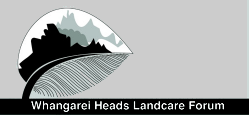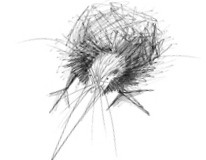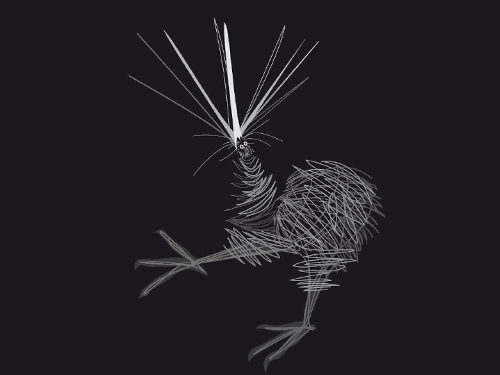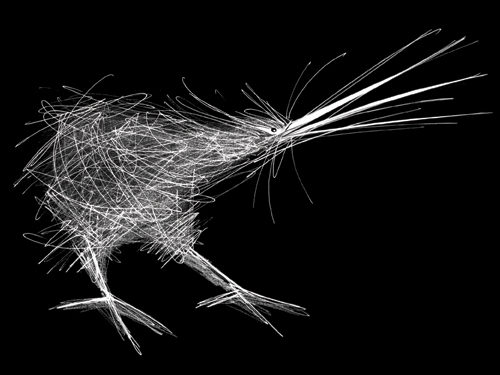2017 June Update
Kiwi Listening shows that kiwi numbers continue to increase
Thanks to all those keen folks that have been involved in our annual kiwi count from 20 listening stations throughout the Heads. Just waiting for the final data sheets to come in but overall it looks like the number of kiwi calls is down slightly at an average of 7.8 calls/hour/station compared with 8.1 in 2016 but the number of kiwi identified is up slightly (i.e. more kiwi calling but not calling as frequently). We use a directional and distance calling recording sheet that allows listeners to build a picture of where the kiwi are located at each site. This data gives us an estimated kiwi population of approximately 900 compared with 810 last year (and 80 back in 2002). I will have a full detailed summary for you next month.
Kiwis for kiwi funding
Our combined application (Backyard Kiwi, Bream Head Conservation Trust, Pataua North LC, Tanekaha CPCA and Tutukaka LC) to Kiwis for Kiwi for a continuation of our ONE work for the next 12 months has been successful. This involves monitoring kiwi dads in the Doc managed area at Rarewarewa to get kiwi chicks to transfer to the Limestone Island crèche to grow them up for release back in managed areas on the mainland. Thank you Kiwis for kiwi for the $11,119 of funding. Thank you also to the others that make this programme so successful: Doc, Ngati Hine, landowners, FOMLI, Kiwi Coast and all the other groups and individuals involved.
Backyard Kiwi Predator Control Programme
As expected for this time of year stoat catches are still low.
Catches for month in the predator traps:
Stoats 0, Weasels 3, Cats 3, Rats 65, Hedgehogs 12 and 6 possums.
The Whangarei Heads Pest Management Working Group, that manages the targeted rate collected by the NRC, recently confirmed a continuation of funding for the kiwi predator trapping and kiwi monitoring work for the next year. This $62,000 is crucial to our ongoing work – thank you to the rate payers of Whangarei Heads for supporting this work in your backyard.
What your radio tracked Backyard Kiwi have been up to:
I was picking an early nesting season this year with such a good (wet) autumn – but something else must be influencing breeding – the dry summer, warm autumn temp??- because only 1 of the monitored male adults has started nesting. The other kiwi are still very active, getting up about 5.30pm and being busy for around 12 hours. July traditionally sees nesting well underway and the males’ activity drop off to 3 or 4 hours so these guys should start nesting soon.
- Darwin – At the Lamb road quarry. His activity is still 12 hours per night.
- Lambert – Usual area at Taurikura Ridge. In the pampas and high activity still of 11.5 hours/night.
- Whitu – By the big slip west of the freezing works at Reotahi. He has started nesting – he had been nesting 5 days on 29/6/17 and has a nightly activity of 4 hours.
- EB – He is beside the intersection of Kerr road and Rarangi Heights. Activity 12 hours/night.
- Tindall – At the North end of Manaia. His activity is 12.5 hours.
- Pakipaki – Moving between the “Horse paddock” and the Manaia club at McLeods Bay. Activity of 11.5 hours.
- Dudin – He has moved south to the middle of McLeod Bay. Activity 13 hours
ONE program (funded by Kiwis for Kiwi):
The ONE dads at Rarewarewa are also feeding up for nesting:.
- The Acrobat -Usual area, Lovell’s’ bush. Activity 12.5 hours. I did his annual transmitter change- he was a fat 2490g and in excellent condition. He was snuggled up with a different female to the one that I have found him with in the past. This a younger girl that I came across by herself back in 2015. In that time she has grown from 2075g to 2480g and her bill is now 122.4mm cf 111.8mm. The Acrobat has proven to be a variable breeder so this potential new mate may improve that.
- Waimarie – In the paddock north of quarry. 11.5 hours nightly.
- Ngutu Roa – Usual area SW reserve. Activity 10.5 hours.
- Sancho – Usual area – Lovell’s bush. Activity 11.5 hours.
- CFU – Usual area – paddock south of reserve. Activity of 12 hours.
- Ray – Usual area east of big slip, 12 hours nightly activity.
- The Boxer – Usual area W end of reserve. 11 hours activity.
Cheers
Todd Hamilton
Backyard Kiwi Project Manager
Whangarei Heads Landcare Forum
M 021 1145 385














